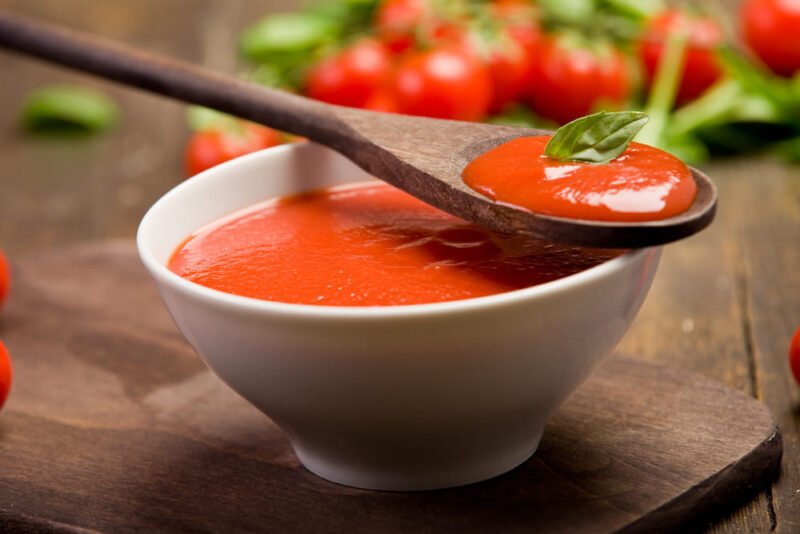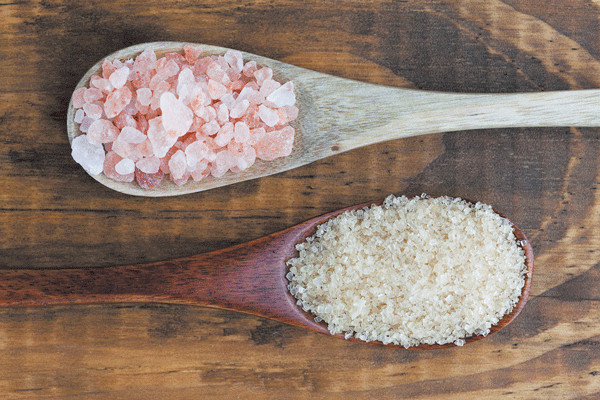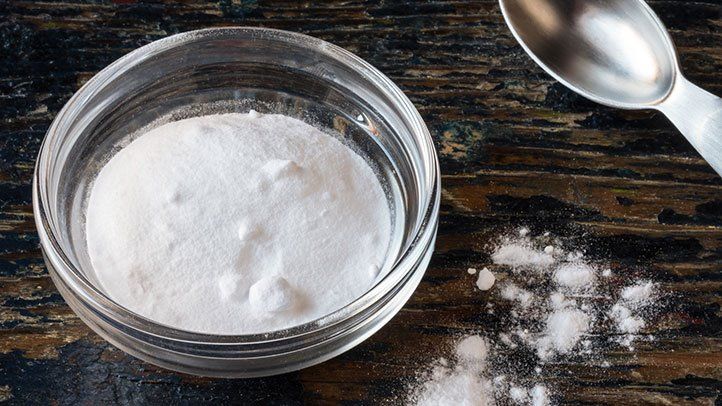How Do You Reduce The Acidity In Tomato Sauce?

Tomato sauce is often created from diced tomatoes simmered in olive oil with salt, spices, and herbs. The sauce is cooked until the tomatoes are softened, and the flavor and texture are just right.
Every culture has its tomato sauce recipe with its spices and herbs. However, they all have one thing in common: tomatoes. Tomato sauce is commonly used as a foundation for various recipes, including stews, braises, and pasta sauces.
Tomatoes have a high water content, a strong flavor, and soft flesh, but they are acidic. As a result, the tomato sauce created with them is acidic.
Sugar, salt, baking soda, spices, vegetables, and dairy products like butter and milk can all be used to reduce the acidity in tomato sauce.
How can acidity in tomato sauce be reduced?
Store-bought tomato sauces, purees, and pastes are incredibly acidic and can induce heartburn and ulcers. Many acids, such as malic acid, citric acid, and ascorbic acid, help to extend their shelf life.
To lessen the acidity in your tomato sauce, start by selecting fresh, ripe tomatoes and removing the seeds. Cook the sauce on low heat for about 2-3 hours, stirring occasionally. As a result, if you like a less acidic tomato sauce, you can create it at home with fresh tomatoes, which are typically sweet and low in acid.
Then, if your tomato sauce is acidic, you can use some of the following components to reduce the acidity. Let’s look at reducing the acidity in tomato sauce in greater detail.
No. 1 Salt and sugar

To reduce the sauce’s acidity, add one teaspoon of sugar as it begins to simmer. If the sauce is still acidic, taste it and add additional sugar if necessary. The sugar will reduce the acidity of your sauce and make it taste less acidic.
You can season your tomato sauce with salt to suit your preferences. It will enhance the flavor of your tomato sauce while reducing acidity.
No. 2 Baking soda

You can also use baking soda to reduce the acidity in your tomato sauce. Mix a quarter teaspoon of baking soda into the sauce. Allow the sauce to boil for 10-15 minutes on low heat before tasting it.
You can add more baking soda if the sauce is still too acidic because the baking soda reacts with the acid in the tomato sauce to produce foam. Don’t be alarmed though; it’s completely natural.
If you use baking soda instead of vinegar, the sauce will be less acidic and less delicious. That is why my tomato sauce has sugar. On the other hand, baking soda might work in your tomato sauce.
No. 3 Vegetables and herbs

To reduce the acidity of tomato sauce, you can use various herbs and vegetables. Carrots, celery, and onions are some of the most common vegetables used to reduce acidity in tomato sauce.
Because caramelized onions are sweet, they will enhance the flavor of your tomato sauce while also reducing acidity. Celery and carrots are in the same boat.
They get sweeter when cooked, and they can also provide sweet overtones to your tomato sauce. You can use herbs like basil, sage, oregano, or parsley to enhance the flavor of your sauce.
Use fresh herbs whenever possible because they release their flavor more quickly than dried herbs. Add them at the end of the cooking time, as well. They will become bitter if you add them at the beginning.
Also, make sure that your vegetables are fresh. Because canned and pickled foods are already acidic, you should avoid them.
No. 4 Milk and dairy products

To reduce the acidity of tomato sauce, use dairy products such as butter and milk. Mix in one teaspoon of butter or milk until thoroughly combined. The butter and milk will not diminish the acidity, but they will cover it enough that you won’t notice it.
You can substitute some of the other components specified in this article if you don’t like or consume dairy products or if they don’t work for your sauce.
What’s the deal with my tomato sauce being so acidic?
Use unripe tomatoes or canned tomatoes. Your tomato sauce may be acidic since canned tomatoes are more acidic than fresh tomatoes.
How much sugar is required to reduce the acidity of tomato sauce?
You can reduce the acidity of tomato sauce by adding one teaspoon of sugar. However, you can taste the sauce and add more sugar until you have a sweeter tomato sauce if it’s still too acidic.
Is it true that sugar reduces the acidity of tomato sauce?
Sugar is a neutral component that does not affect tomato sauce’s acidity. However, it decreases acidity, adds sweetness to tomato sauce, and helps balance the flavors.
Does adding butter to tomato sauce reduce acidity?
The acidity of tomato sauce isn’t reduced by butter. It simply covers it up, so you don’t notice it.
Tomato sauce acidity: does vinegar help?
Because vinegar is acidic, it does not help decrease tomato sauce’s acidity. The flavor of the tomato sauce is enhanced by it.
Thoughts to conclude with
You can use these ingredients to improve the flavor of your tomato sauce if it becomes acidic while you’re cooking it at home. Salt, sugar, baking soda, or spices, as well as vegetables, can be added.
Start with a bit of amount and gradually increase until you achieve the desired outcomes. You can also add butter or milk to your tomato sauce, but expect it to take on a somewhat lighter color and have a buttery flavor.
You can add one entire peeled potato to your tomato sauce as an extra ingredient. The sauce’s acidity will be absorbed by the potato, resulting in a less acidic tomato sauce.











